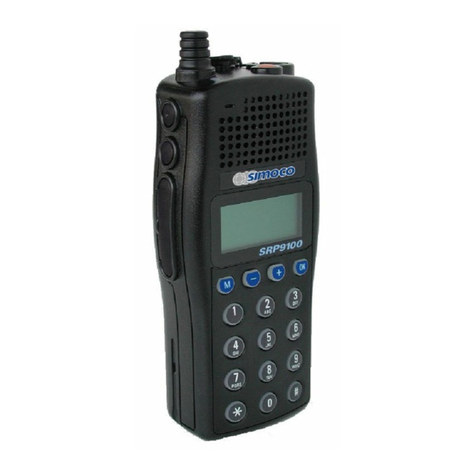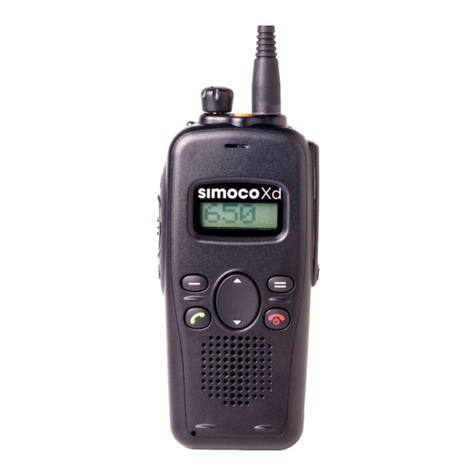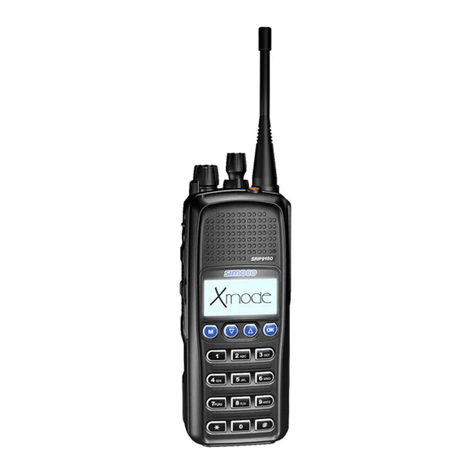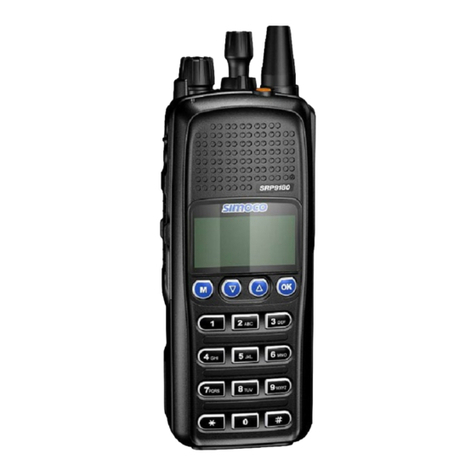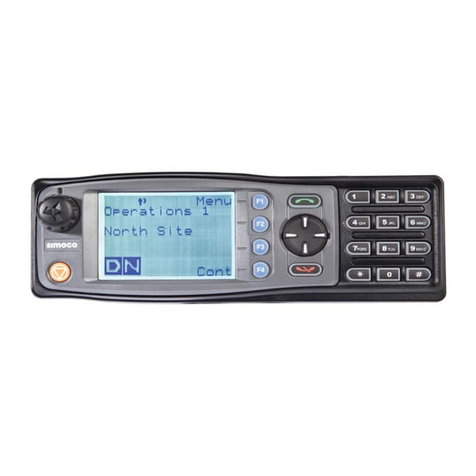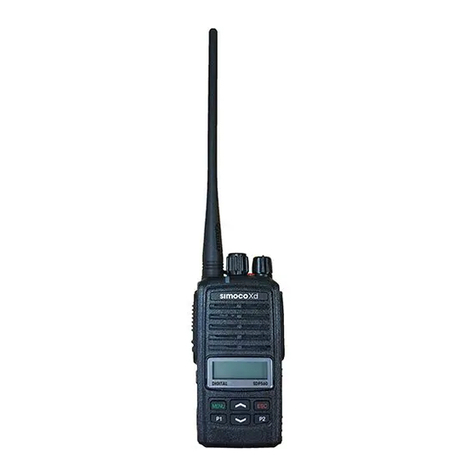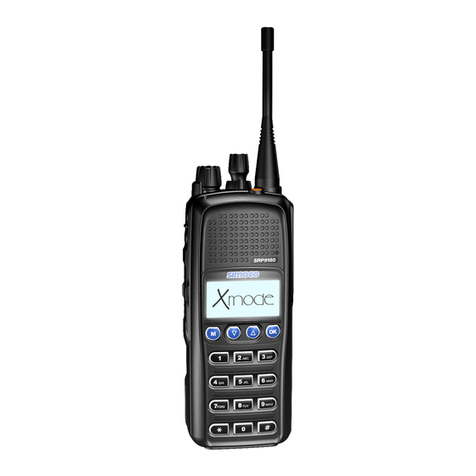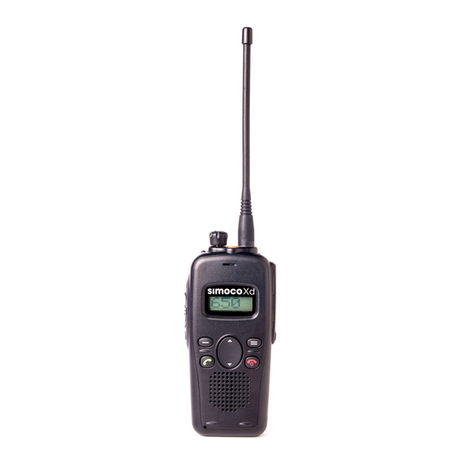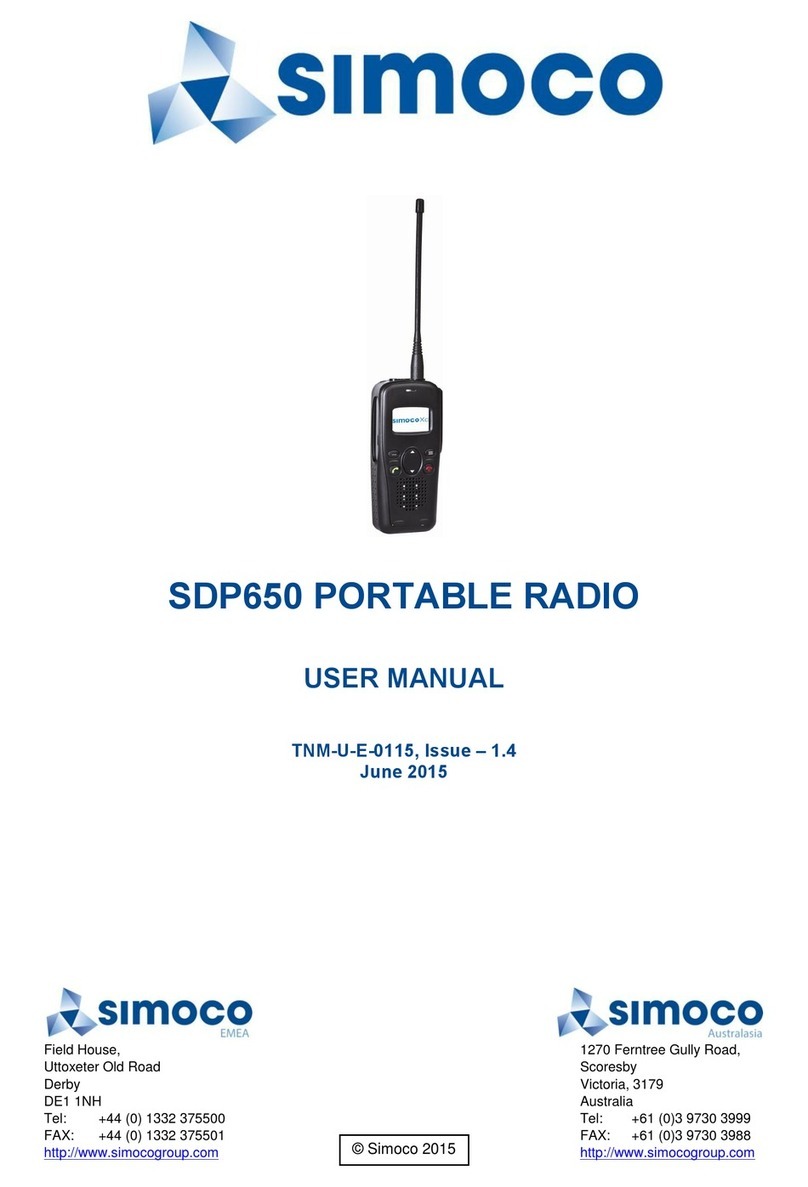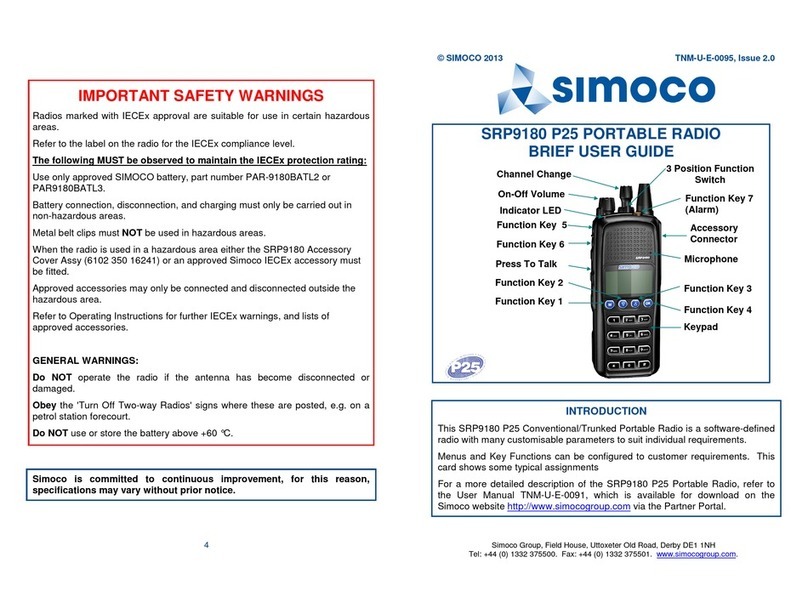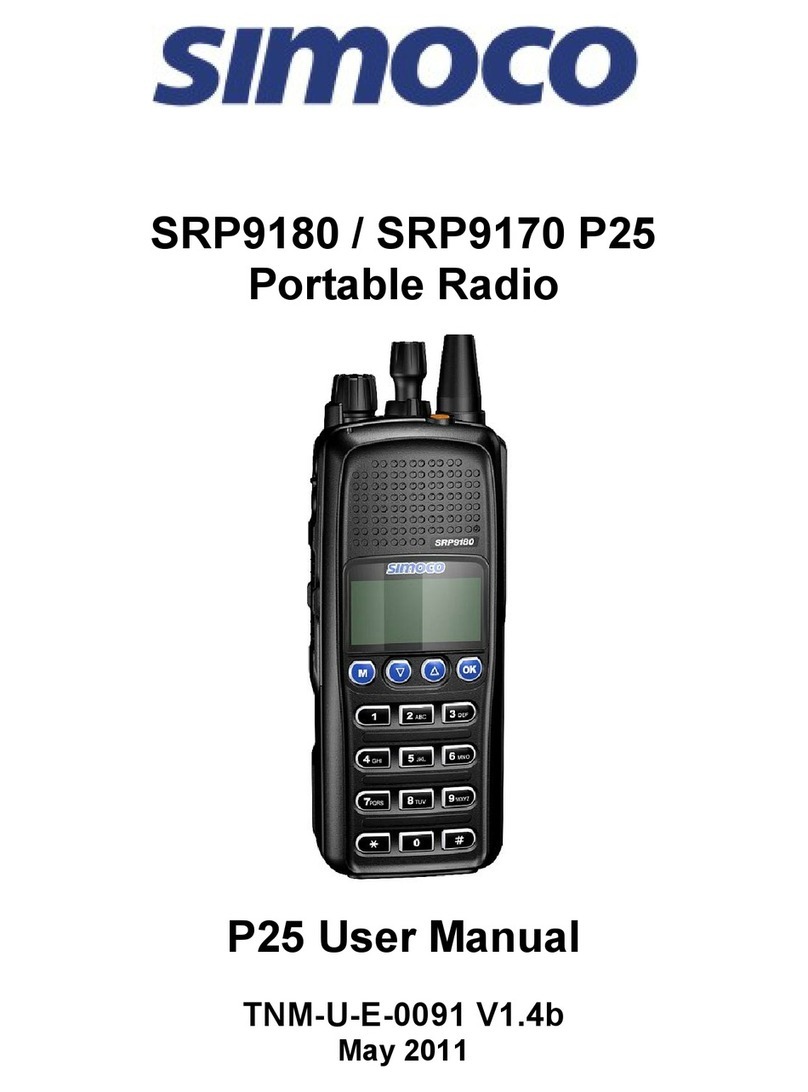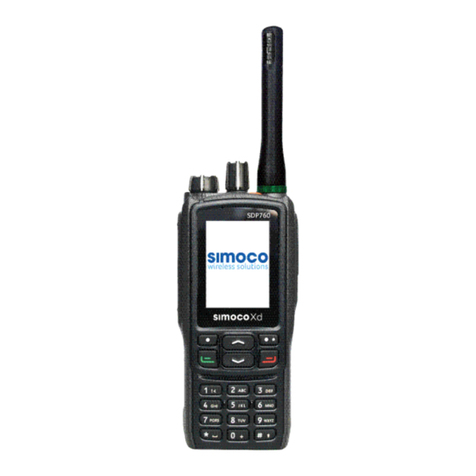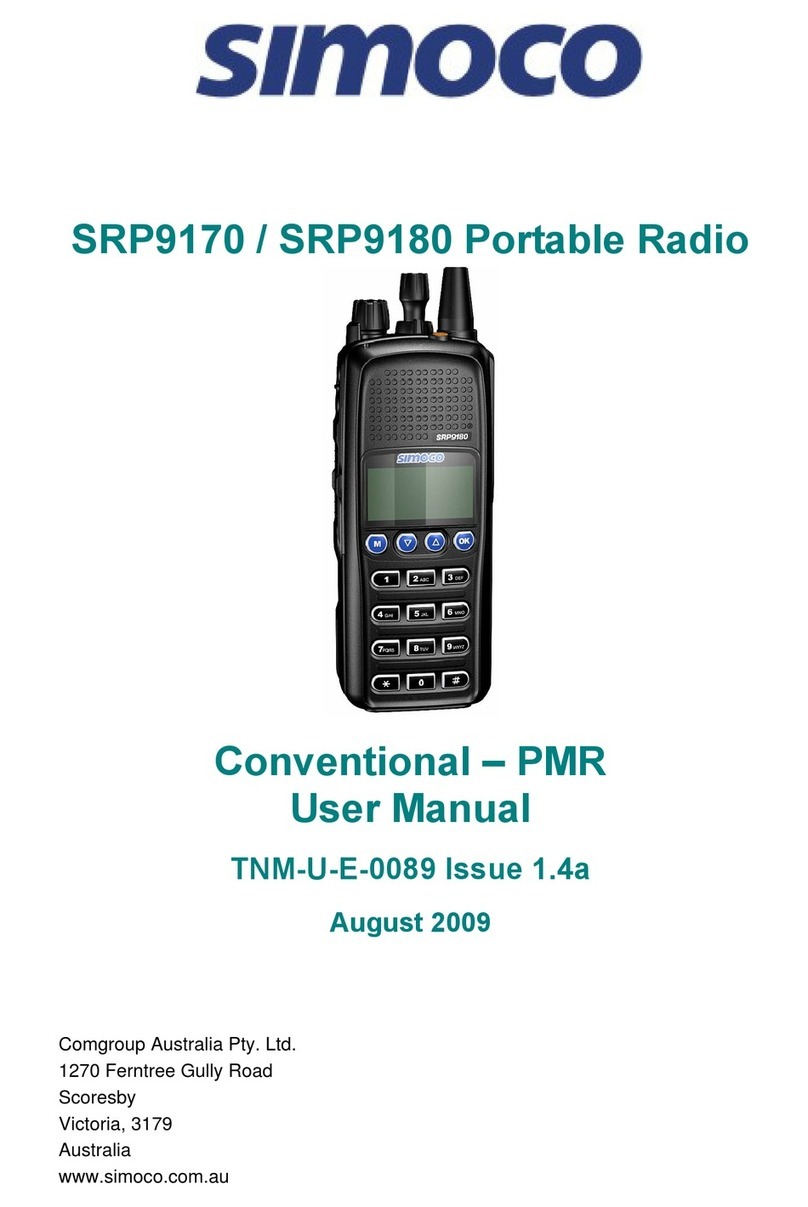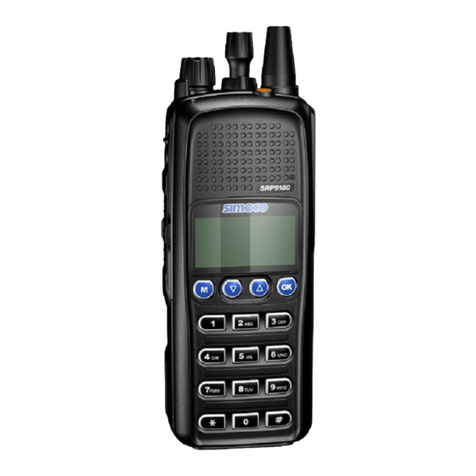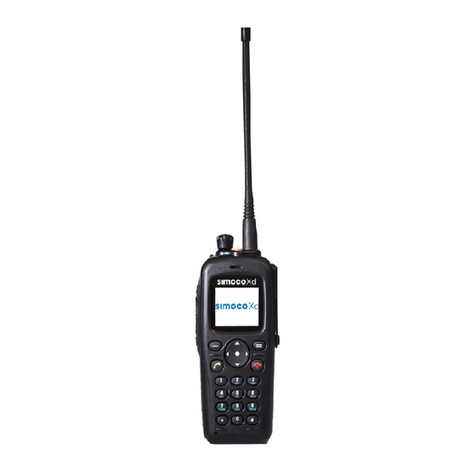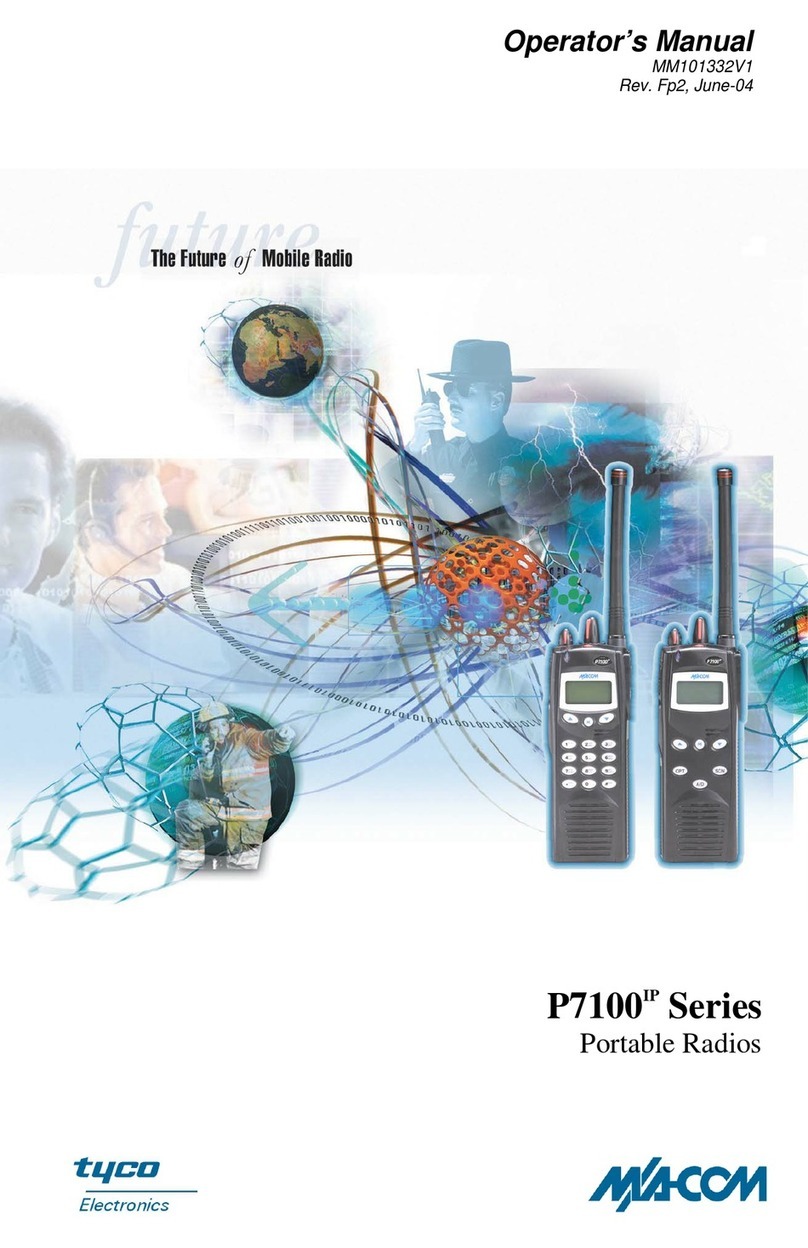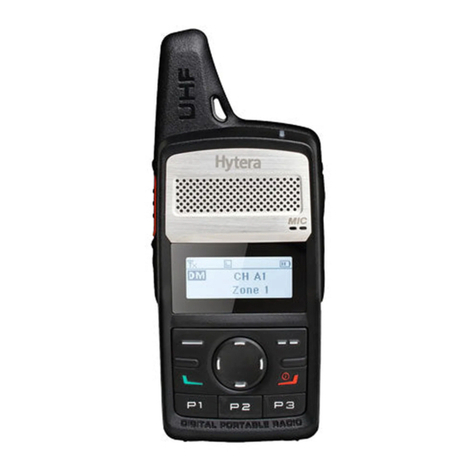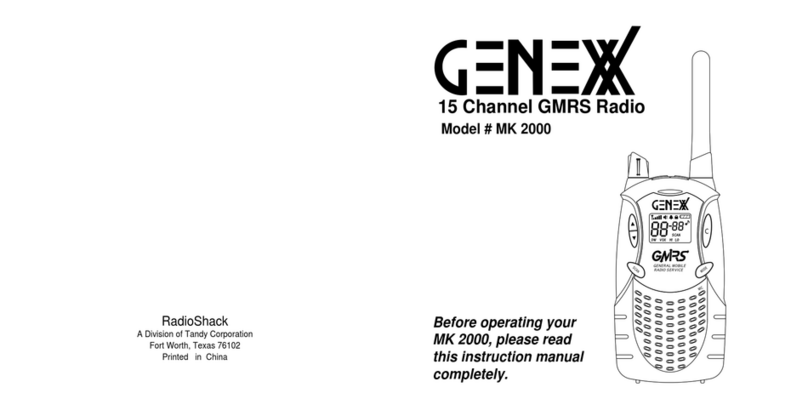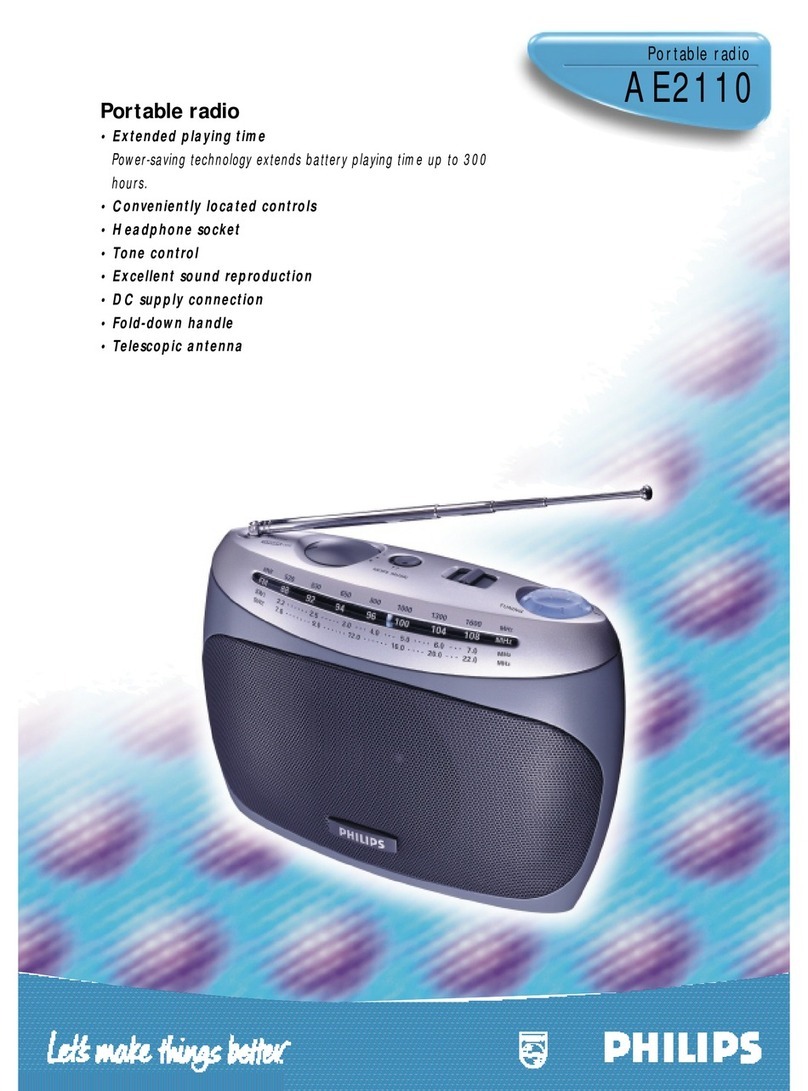
SDP660 – USER MANUAL TNM-U-E-0114
Jul 1 (Iss 1.1) Page 5 CONTENTS
5.8
M
AKING A
C
ALL
................................................................................................................30
5.9
R
ECEIVING A
C
ALL
............................................................................................................ 31
9S
CAN
/ V
OTING
UNCTIONS
....................................................................................................... 32
5.9.1
Scan/ Voting Screen............................................................................................... 2
5.10
E
MERGENCY
A
LARM
......................................................................................................... 33
5.10.1
Making an Emergency Call.....................................................................................
6
MENU SYSTEM...................................................................................................................34
6.1
M
ENU
N
AVIGATION
............................................................................................................ 35
7
MENU SCREENS ................................................................................................................36
7.1
C
HANNELS
M
ENU
..............................................................................................................36
7.2
Z
ONE
M
ENU
...................................................................................................................... 37
7.3
S
ETTINGS
M
ENU
...............................................................................................................37
7.4
O
PTIONS
M
ENU
................................................................................................................. 38
7.5
C
ONTACTS
M
ENU
..............................................................................................................38
7.6
I
N ORMATION
M
ENU
.......................................................................................................... 39
7.7
M
ESSAGES
M
ENU
............................................................................................................. 40
7.7.1
Inbox ...................................................................................................................... 40
7.7.2
Outbox.................................................................................................................... 41
7.7.
Send Status............................................................................................................ 41
7.7.4
Send Template ....................................................................................................... 42
7.7.5
New Message......................................................................................................... 42
7.7.6
Sending Status, Template and Text Messages....................................................... 4
7.7.7
Viewing Received Messages.................................................................................. 4
7.8
M
UTE
A
DJUST
M
ENU
......................................................................................................... 44
7.9
B
ACKLIGHT
M
ENU
............................................................................................................. 45
7.10
B
RIGHTNESS
M
ENU
........................................................................................................... 46
7.11
K
EY
B
EEPS
M
ENU
............................................................................................................. 46
7.12
S
PEAKER
V
OLUME
M
ENU
..................................................................................................47
7.13
A
LERT
V
OLUME
M
ENU
....................................................................................................... 47
7.14
R
ADIO
S
TATUS
M
ENU
........................................................................................................48
7.14.1
RSSI 48
7.14.2
Battery Level .......................................................................................................... 48
7.14.
Accelerometer Orientation...................................................................................... 49
7.14.4
GPS 49
7.15
S
CAN
M
ENU
...................................................................................................................... 49
7.16
D
ISPLAY
T
EST
.................................................................................................................. 50
8
SPECIAL UNCTIONS........................................................................................................ 52
8.1
C
HANNEL
U
P
A
ND
D
OWN
..................................................................................................52
8.2
Z
ONE
U
P AND
D
OWN
......................................................................................................... 52
8.3
S
CAN
O
N
/O
...................................................................................................................52
8.4
S
KIP
.................................................................................................................................52
8.5
T
ALK
A
ROUND
O
N
/O
..................................................................................................... 52
8.6
L
OW
P
OWER
..................................................................................................................... 52
8.7
G
O
T
O
C
HANNEL
A, B, C
OR
D.........................................................................................52
8.7.1
Go To Contact A, B,C or D .....................................................................................52
8.8
M
ENU
............................................................................................................................... 52
